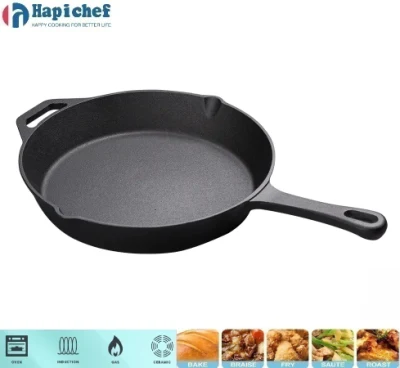Versatile Porcelain-Enamel Cookware for Perfectly Cooked Meals Every Time
The Porcelain Cast Iron Skillet A Culinary Marvel
In the world of cookware, the cast iron skillet has long been celebrated for its durability, heat retention, and versatility. However, the emergence of porcelain-coated cast iron skillets has taken this beloved kitchen staple to a new level, combining the traditional benefits of cast iron with the modern elegance and ease of porcelain enamel. This article explores the features, benefits, and best practices for using a porcelain cast iron skillet, showcasing why it deserves a special place in your kitchen.
What is a Porcelain Cast Iron Skillet?
A porcelain cast iron skillet is a heavy-duty cooking tool made from cast iron and coated with a layer of porcelain enamel. The combination of these two materials creates a skillet that is not only excellent for cooking but also visually appealing. The porcelain coating is typically available in various colors and patterns, making it a stylish addition to any kitchen decor. The skillet retains the remarkable heat retention and distribution properties of cast iron while offering a non-reactive surface that prevents food from sticking.
Benefits of Using a Porcelain Cast Iron Skillet
1. Durability Like traditional cast iron, porcelain cast iron skillets are incredibly durable. They can withstand high temperatures and are designed for use on the stovetop, in the oven, or even over an open flame, making them adaptable for various cooking methods.
2. Non-stick Surface The smooth, porcelain surface provides a non-stick capability that makes cooking and cleaning a breeze. You can enjoy the benefits of a non-stick skillet without compromising on the cooking quality that cast iron offers.
3. Easy to Clean Unlike traditional cast iron, which requires special care to maintain its seasoning, porcelain-coated skillets are far easier to clean. Most can be washed with soap and water, although some manufacturers recommend avoiding abrasive cleaners to preserve the enamel.
4. Aesthetic Appeal With a wide range of colors available, porcelain cast iron skillets can add a pop of color to your kitchen. Their beauty allows them to double as serveware, so you can take your dish straight from oven to table, impressing guests with both your cooking and your presentation.
porcelain cast iron skillet

5. Versatility These skillets can be used for sautéing, frying, baking, and even roasting, making them an indispensable tool in your kitchen arsenal. From searing meats to baking cornbread, a porcelain cast iron skillet is up for the task.
Best Practices for Using a Porcelain Cast Iron Skillet
While porcelain cast iron skillets are designed for versatility and ease of use, there are some best practices to ensure they maintain their quality and longevity.
- Preheat Gradually To avoid thermal shock, which could crack the porcelain, heat the skillet gradually on low to medium heat before increasing the temperature.
- Use Wooden or Silicone Utensils To protect the enamel surface, use wooden, silicone, or plastic utensils rather than metal, which can scratch the surface.
- Avoid Storing Foods in the Skillet While it may be tempting to leave leftovers in the skillet, the acidity from foods could damage the enamel over time. Instead, transfer any leftovers to a more appropriate storage container.
- Consider Hand Washing Although some skillets may be labeled as dishwasher safe, handwashing with mild soap is generally recommended to ensure the enamel remains intact.
Conclusion
The porcelain cast iron skillet is a remarkable fusion of the old and the new, providing a beautiful yet functional addition to any kitchen. Its durability, ease of use, and aesthetic appeal make it an excellent choice for both novice and experienced cooks. By understanding how to properly care for and utilize this versatile cookware, you can enhance your culinary experiences and create delicious meals that can be served with style. Embrace the innovation of porcelain cast iron, and elevate your cooking game today!
-
Why Every Kitchen Needs a Casserole Cast Iron DishNewsJun.24,2025
-
Experience the Tradition and Quality of Cast Iron CookwareNewsJun.24,2025
-
Double Sided Cast Iron Grill PanNewsJun.24,2025
-
Cast Iron Dutch Ovens You’ll Actually UseNewsJun.24,2025
-
Buy Cast Iron Griddle for Everyday CookingNewsJun.24,2025
-
Barbecue Iron Grill Cooking PowerNewsJun.24,2025
-
Standard Product Lines from Cast Iron Cookware SuppliersNewsJun.11,2025
